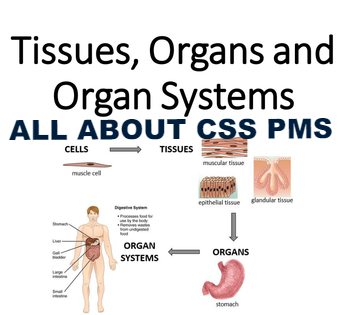Relationship between Cells, Tissues and Organs

The Relationship between Cells, Tissues and Organs :
Cells make up tissues, tissues make up organs, and organs, make up organ systems. In the human body, cells are the basic units of life. Groups of cells working together for a specific function form tissues. Organs are two or more tissues operating together. Even separate organs work together, forming body systems.
Cells in the Human Body :
The simplest unit of life is the cell. In fact, some organisms like bacteria are nothing more than a single cell. The human body contains approximately 30 trillion cells and that is without considering all he unicellular bacteria that naturally colonize the digestive tract. Scientists estimate there are approximately 200 unique types of cells in the human body.
Cell Form Tissues :
Groups of cells organized together for a specific function form tissues. There are four basic types of tissue in the human body : epithelial, muscle, nerve and connective. Epithelial tissue covers the exterior of he body as well as the linings of the organs and cavities of the body. Muscle tissue contains cells that are sometimes called "excitable" because they are able to contract and enable movement. Nerve tissue conducts electrical impulses and send signals through the body. Connective tissue holds the body together and includes both bones and blood.
Tissues Form Organs :
An organ is two or more tissues that come together to form a single unit with a unique structure and function. The heart, for example, is an organ that contains all four types of tissue to accomplish its very important task. There are 78 organs in the human body, including five organs considered vital for life. These vital organs are the brain, heart, lungs, kidney and liver. The largest human organ is the skin, which can weigh around 20 pounds.
Recently, scientists mapped out more than a million cell across 33 organs in the human body which can provide unparalleled insights into health and diseases.
Researchers looked at single immune cells from deceased individuals to understand the function of immune cells in different tissues.
Foetal tissues were also studied to generate a map of the developing immune system across gestation stages ---
the period between conception and birth.
Mapping was also specifically undertaken about cells that host genes linked to diseases like muscular dystrophy or heart disease.
Study observed multiple tissues from human donors. The researchers named it the Tabula Sapiens cell atlas.


